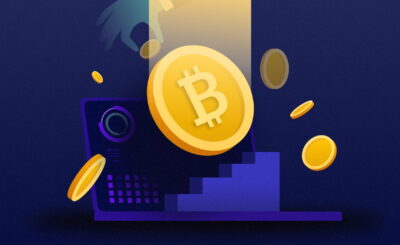There are several types of cryptocurrencies that people use nowadays. With the increase in the tightness of the security system, this form of digital currency is gradually encroaching into the major currency system of different countries. Every form of cryptocurrency is in constant competition, and they bring up new features to support them in such competitions. If you wish to differentiate between different types of cryptocurrency, the major point that you will consider is their innovation segment.
The Cardano system is one of the latest segments in the cryptocurrency chapter. The Cardano blockchain system offers special attention to the security and stability that it offers to its users. Cardano’s ADA is different from Bitcoins and Ethereum due to several factors. Let us look at some of them.
Tackling infrastructure and scaling problems
ADA considers itself as the first cryptocurrency belonging to the third generation. Bitcoins occupies the position of the first generation since it introduced the concept of digital coins. Ethereum is considered to belong to the second generation since it expanded the use of such coins for small contracts. Both these systems face several infrastructures and scaling problems that are being taken care of in the Cardano system. It also pays special focus to the sustainability and interoperability on these cryptocurrency platforms.
An efficient algorithm to support the Cardano system
The Cardanoblockchain system uses the state-of-the-art Ouroboros system to find solutions to problems associated with other cryptocurrency systems. For example, bitcoins often face issues with network slowdown and high fees. Such outcomes are related to the increases observed in transaction volumes. The Ouroboros system can effectively tackle such problems with simple scaling solutions.
The Proof of Stake approach that Ouroboros has devised has been effective in saving energy costs and enabling faster processing of transactions. Previously, Bitcoins used to have every blockchain dedicated to each node. However, the Cardano system streamlines all the nodes in a network by appointing individual leaders for every node. These leaders are appointed with the responsibility of validating and verifying all such transactions from a variety of nodes. They also appoint a leader node that transfers all these transactions to the main network.
The Recursive Internetworked Architecture (RINA) system
Along with other features, the Cardano system has also incorporated the RINA property in its system to enable efficient scaling of their network. John Day developed such network topology, and it allows heterogeneous networks to incorporate customized increments. The eminent analyst Hoskinson foresees such protocols to reach the standard of TCP/IP, the major protocol used in the exchange of data over the internet.
Cross-chain transfers
An efficient feature of the Cardano system is cross-chain transfers. It enables such transfers by means of side chains. Such transactions between parties are generally conducted off-chain. Such a system also concentrates on developing ways to allow individuals or institutions to divulge metadata related to identities and transactions selectively, thus enabling cryptocurrency use in daily or trading transactions.
These are some of the basic differences between the Cardanoblockchain system and other cryptocurrencies like Ethereum and Bitcoin. They offer one of the best platforms for users to conduct their transactions.






